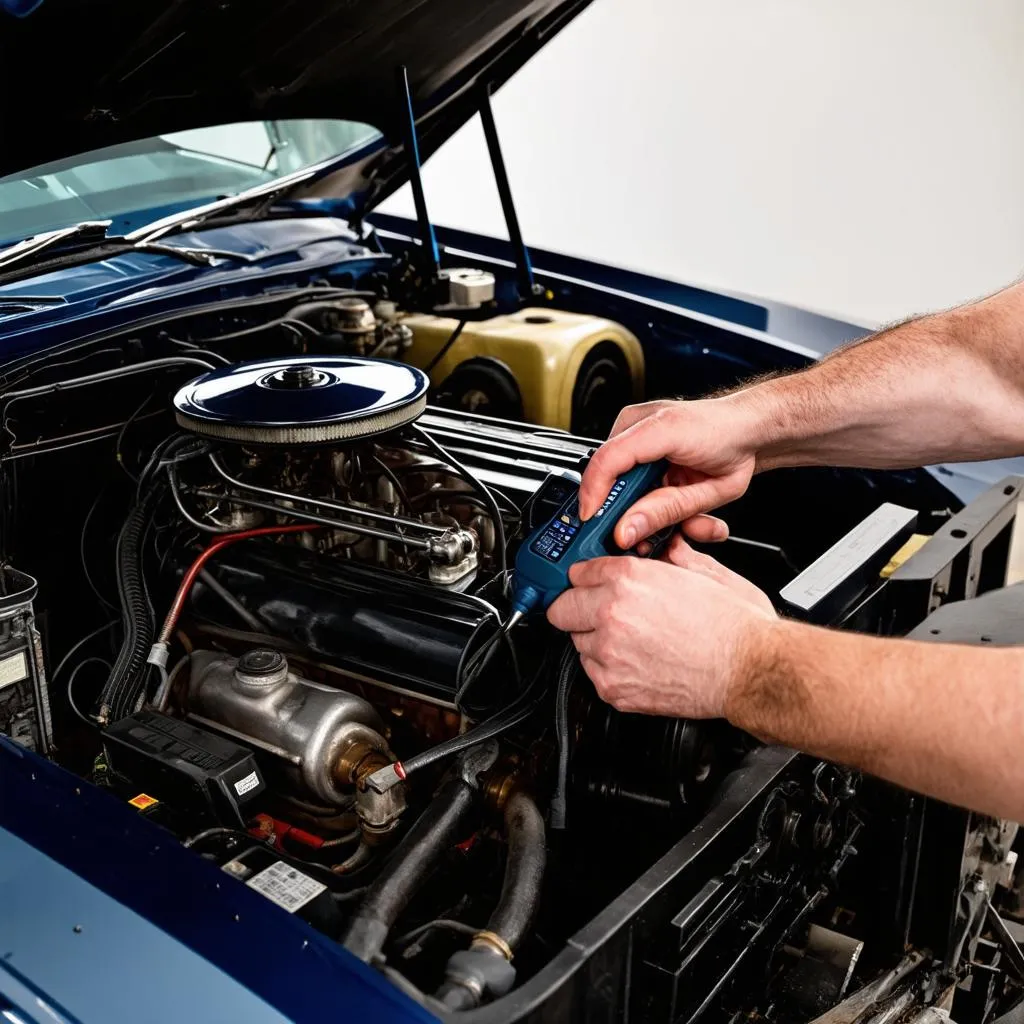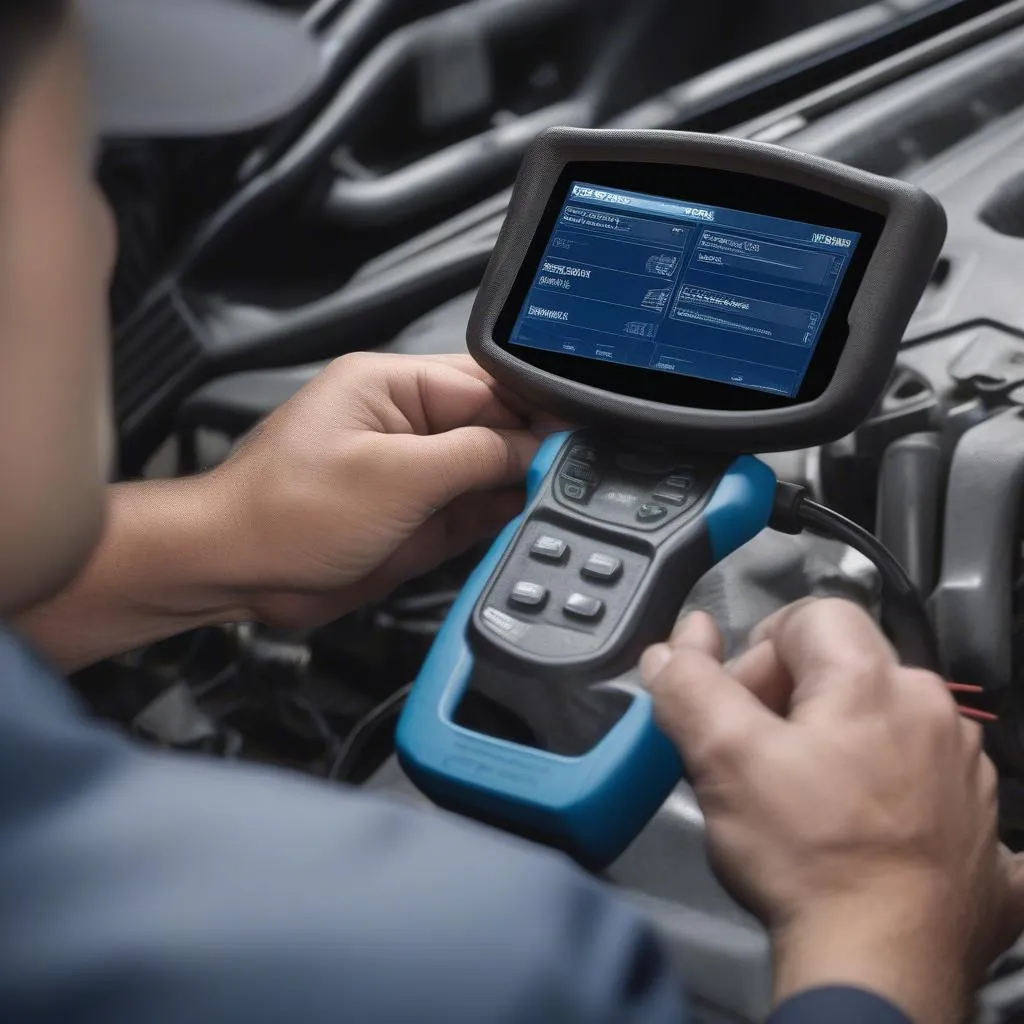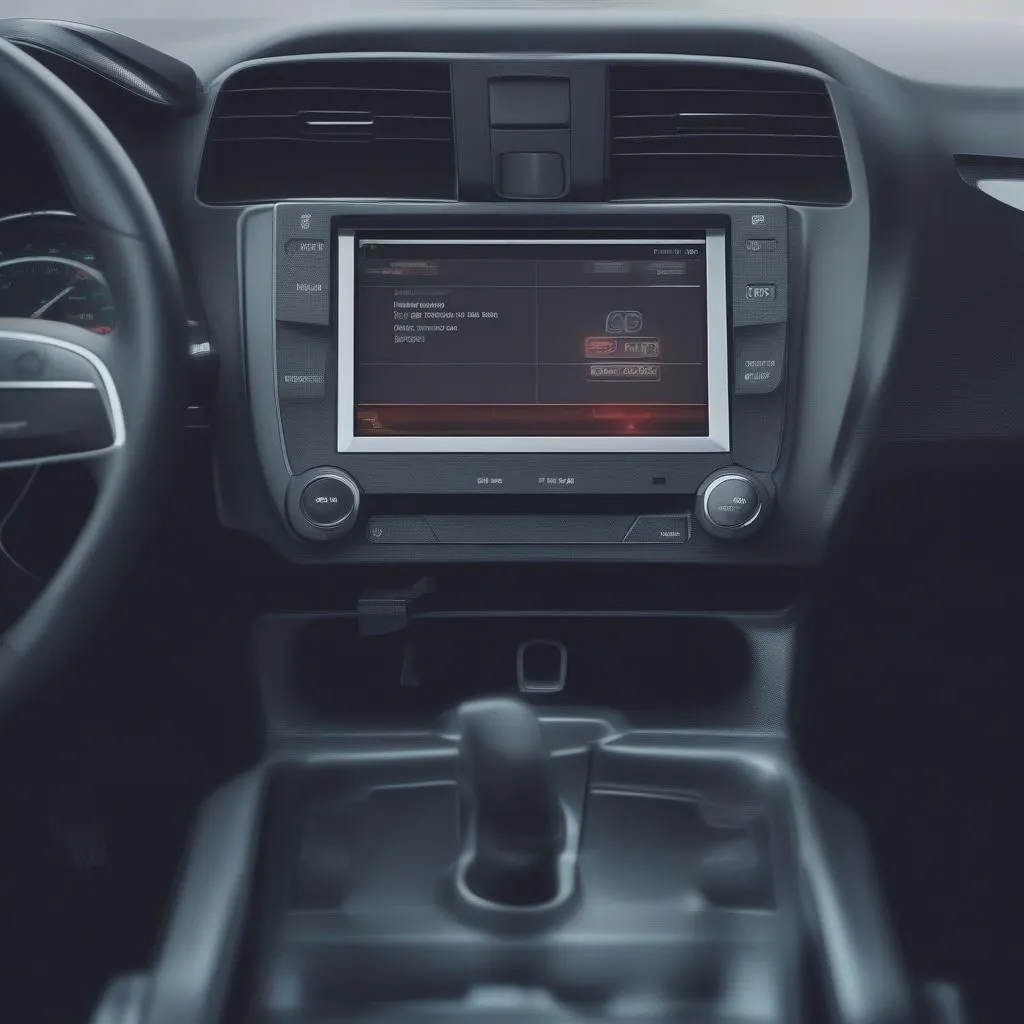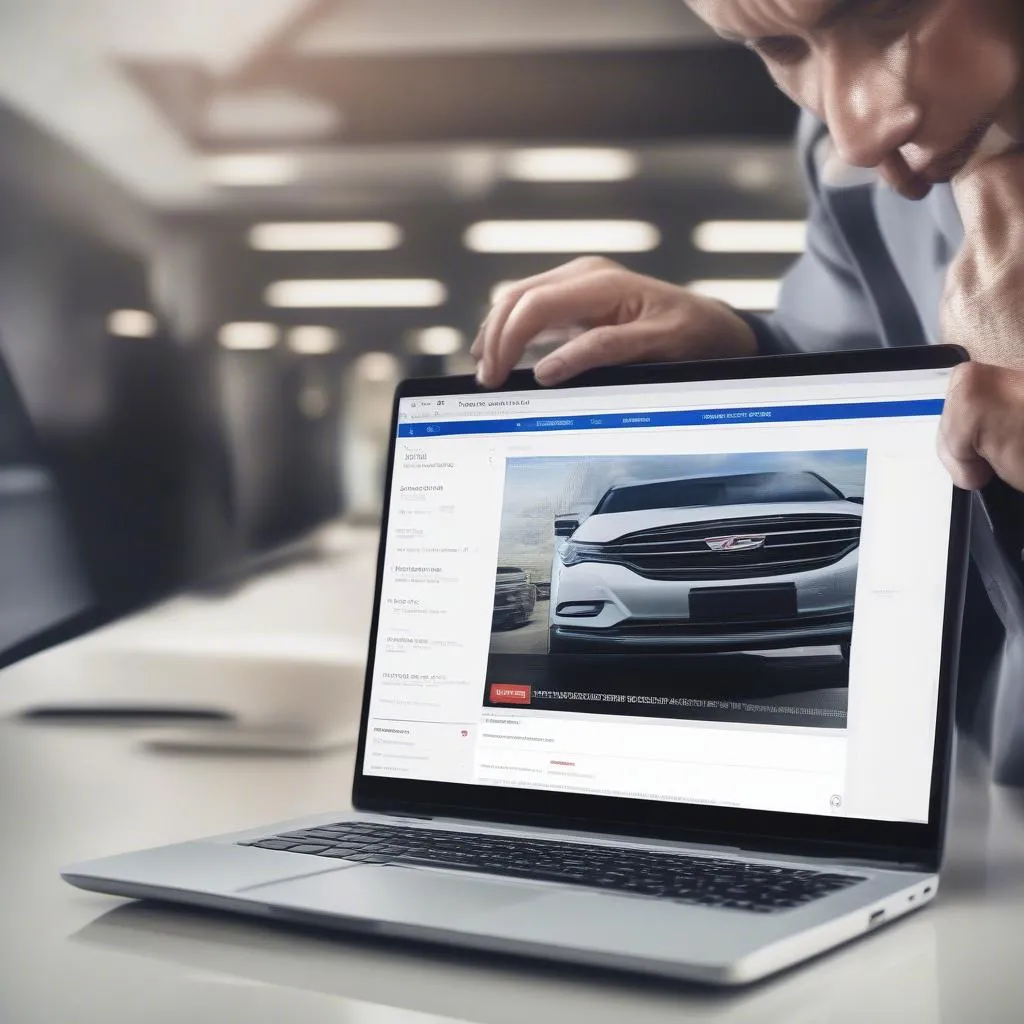Picture this: you’re tinkering under the hood of your trusty 1993 Ford Mustang, a classic beauty with a few miles on the clock. Suddenly, the check engine light throws you a menacing glare. Your mind races – what could be wrong? You’ve heard whispers about these new-fangled “scan tools” that can talk to a car’s computer, but can they really decipher the secrets of a vehicle from the ’90s?
Decoding the Question: What Does it Mean to “Scan” an Older Car?
Before we dive into the heart of the matter, let’s clarify what we mean by “scan tool” and its purpose in automotive diagnostics.
- From a Mechanic’s Perspective: Think of a scan tool as a specialized translator, bridging the gap between your car’s computer and your understanding. It deciphers the cryptic codes the car throws out, providing valuable clues about potential issues.
- Through an Engineering Lens: Technically speaking, a scan tool connects to the car’s On-Board Diagnostics (OBD) system, a standardized system for monitoring emissions and engine performance.
- The Economic Angle: In the past, diagnosing car problems often involved lengthy and costly trial-and-error processes. Scan tools revolutionized this, making diagnostics faster, more accurate, and ultimately, more affordable for car owners.
So, Can You Use a Scan Tool on a Car from the 1990s?
The short answer is: it depends. Here’s why:
The Evolution of On-Board Diagnostics
The OBD system, which scan tools rely on, has evolved significantly over the years:
- OBD-I (Pre-1996): Early ’90s cars likely have OBD-I systems, which were less standardized and manufacturer-specific. Scan tools for these systems exist but might not be as readily available or comprehensive.
- OBD-II (1996 onwards): This standardized system became mandatory in the US for all vehicles manufactured after 1996. Most modern scan tools are designed for OBD-II.
Finding the Right Tool for the Job
If your ’90s car is pre-OBD-II, don’t despair! You still have options:
- Manufacturer-Specific Scan Tools: These are designed to work with specific car brands, like the BMW scan tool, offering deeper insights into the vehicle’s systems.
- Adapters for OBD-I: Some manufacturers offer adapters that allow you to connect an OBD-II scan tool to an OBD-I port.
Common Scenarios:
- 1995 Honda Civic with a Check Engine Light: This car likely has an OBD-I system. An adapter or a specialized OBD-I scan tool would be needed.
- 1998 Toyota Camry Showing Engine Performance Issues: This vehicle should have an OBD-II system, compatible with most modern scan tools, including the Actron Elite Autoscanner.
- 1993 Jeep Wrangler Experiencing Electrical Problems: While a scan tool might provide some insights, electrical issues on older cars often require a more hands-on approach and experience with wiring diagrams.
Getting the Most Out of Your Scan Tool
Finding the right scan tool is just the first step. Remember:
- Codes are Clues, Not Diagnoses: A scan tool gives you codes, not definitive answers. Further investigation is always needed.
- Research and Resources are Your Friends: Plenty of online forums and resources can help you decipher codes and understand potential issues.
FAQs About Scan Tools and Older Cars
Here are some common questions we encounter:
- Can I use any OBD-II scan tool on my 1996 car? While most OBD-II scanners will connect, some features might be limited. Investing in a quality scan tool compatible with your car’s make and model is always recommended.
- My scan tool isn’t showing any codes. What should I do? Ensure the tool is properly connected and powered on. If the problem persists, the issue might lie with the car’s OBD port or other underlying electrical problems.
- Is it worth buying a scan tool for my old car? If you enjoy DIY repairs and want a better understanding of your car’s health, a scan tool can be a valuable investment.
Beyond the Scan: Other Diagnostic Tools for Older Cars
While scan tools are powerful, remember other essential tools:
- Multimeters: These measure voltage, resistance, and continuity, crucial for diagnosing electrical issues.
- Vacuum Gauges: These tools help diagnose issues with engine vacuum, a critical aspect of older engine systems.
- Timing Lights: Essential for checking and adjusting ignition timing, especially on older cars with distributors.
 vintage car engine diagnosis
vintage car engine diagnosis
Need More Help? We’re Just a Message Away!
Navigating the world of car diagnostics, especially on older vehicles, can feel overwhelming. If you’re unsure about using a scan tool or need assistance interpreting the results, don’t hesitate to reach out. Contact our team of automotive experts via WhatsApp at +84767531508. We’re here to help you keep your classic beauty running smoothly.
Keep Exploring:
For more insightful articles about car diagnostics, scan tools, and all things automotive, check out these resources:
 car diagnostics
car diagnostics
We’d love to hear from you! Share your experiences with scan tools on older cars in the comments below.


